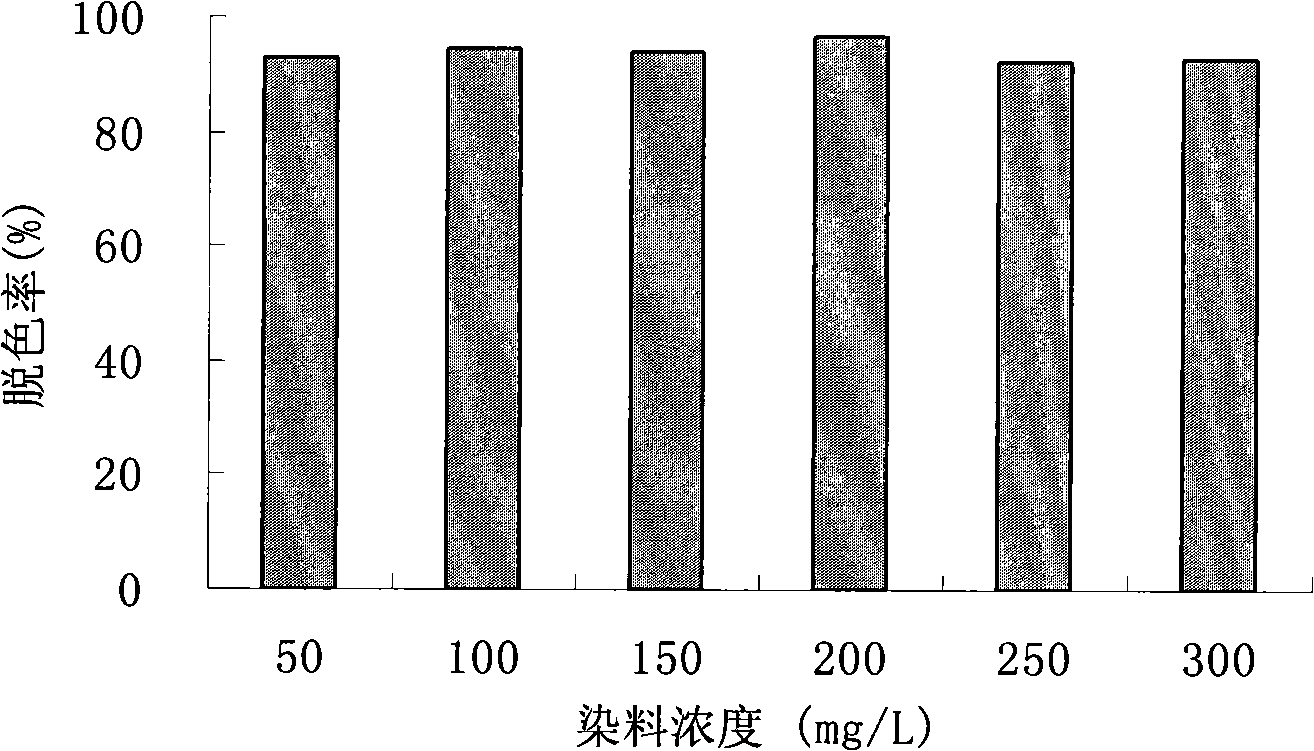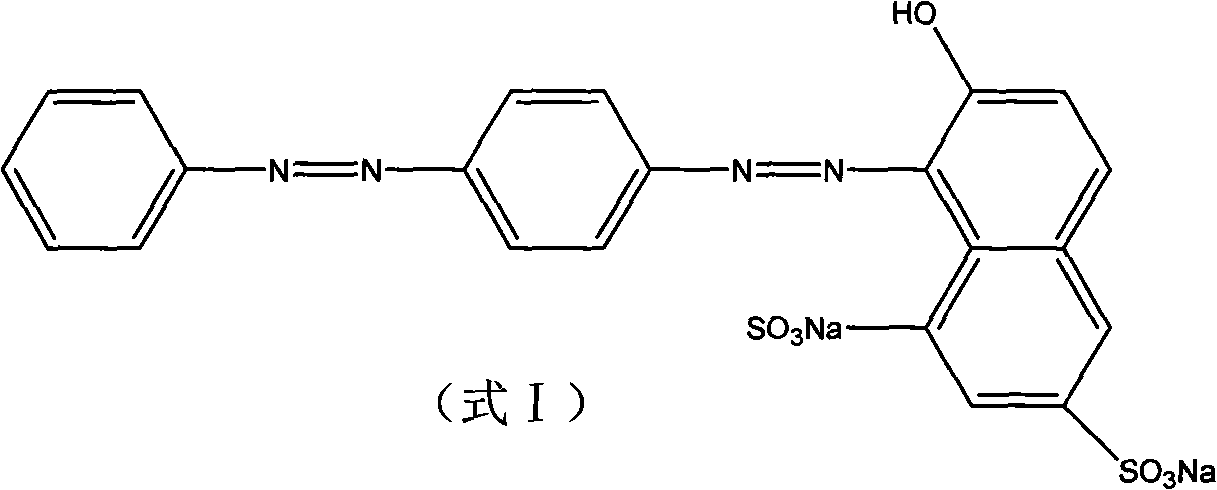Staphylococcus pasteuri and application thereof in decolorization
A technology of staphylococcus pastoris and staphylococcus, applied in bacteria, microorganism-based methods, textile industry wastewater treatment, etc., can solve the problems of weak environmental adaptability, dye decolorization, poor broad spectrum of single decolorizing bacteria, etc. The effect of improving efficiency
- Summary
- Abstract
- Description
- Claims
- Application Information
AI Technical Summary
Problems solved by technology
Method used
Image
Examples
Embodiment 1
[0025] Example 1. Isolation, purification and identification of Staphylococcus pasteuri Y1 CGMCC No.3431.
[0026] The screening process of Staphylococcus pasteuri (Staphylococcus pasteuri) provided by the invention is obtained from the activated sludge separation and purification of a printing and dyeing factory in Zhejiang, and the specific screening steps are as follows:
[0027] Extract sludge from a wastewater pool of a printing and dyeing factory in Zhejiang, weigh 1g, break it up with glass beads, mix well with 100ml of sterile water, and take 3-4ml of the liquid into a sterilized selective culture with a pH value of 12 culture medium at 37°C and 170 rpm for 12 hours, and the enriched samples were prepared for 10 -1 、10 -2 、10 -3 、10 -4 、10 -5 、10 -6 、10 -7 There are 7 dilutions in total, each dilution draws 0.2ml and spreads it on the dye medium plate and cultures it at 37°C for 24 hours. strain. Inoculate the picked decolorized strains in liquid LB medium cont...
Embodiment 2
[0034] Example 2, Verification of the Decolorization Effect of Staphylococcus pasteuri Y1 CGMCC No.3431 on Acid Scarlet GR
[0035] Inoculate the LB culture medium from the slant where Staphylococcus pasteuri (Staphylococcus pasteuri) Y1 CGMCC No.3431 was preserved, activate the bacteria on a shaking table at 37°C and 150 rpm for 12-16 hours, and cultivate the bacteria to the logarithmic phase. Inoculate the activated bacterium solution into the dye medium with an inoculation amount of 5% (v / v), and place it for anaerobic culture at 37°C (anaerobic conditions are to fill the serum bottle with the bacteria for 5 minutes, and put the Air out), pH 6.8, culture time 30h-3d. After the cultivation is over, take a certain amount of culture solution and add it to the centrifuge tube, centrifuge at 13000rpm for 10min, take the supernatant and measure the absorbance value of Acid Scarlet GR at the maximum absorption wavelength of the dye at 510nm on a spectrophotometer, and use the valu...
Embodiment 3
[0043] Example 3, decolorization of acid scarlet GR by Staphylococcus pasteuri Y1 CGMCCNo.3431 under high pH conditions
[0044] According to the method for Example 2, the activated Staphylococcus pasteuri (Staphylococcus pasteuri) Y1CGMCC No.3431 bacterium liquid was inoculated into the acid scarlet GR (50mg / L) dye medium of pH=11 and pH=12 respectively, 37 ℃ static anaerobic culture for 40h. Detect and calculate decolorization rate according to the method for embodiment 2.
[0045] Acid scarlet GR (50mg / L) dye medium with pH=11 or pH=12: LB culture medium added with 50mg / L acid scarlet GR (first adjust the medium to pH 11 or 12 with NaOH, then add acidic scarlet GR Big Red GR).
[0046] The experimental results showed that the decolorization rate of the strain to Acid Scarlet GR was 91% at pH=11, and 92% at pH=12.
PUM
 Login to View More
Login to View More Abstract
Description
Claims
Application Information
 Login to View More
Login to View More - R&D
- Intellectual Property
- Life Sciences
- Materials
- Tech Scout
- Unparalleled Data Quality
- Higher Quality Content
- 60% Fewer Hallucinations
Browse by: Latest US Patents, China's latest patents, Technical Efficacy Thesaurus, Application Domain, Technology Topic, Popular Technical Reports.
© 2025 PatSnap. All rights reserved.Legal|Privacy policy|Modern Slavery Act Transparency Statement|Sitemap|About US| Contact US: help@patsnap.com



